第134章 NORTHERN CHILE.CONCLUSION(4)
Sixthly: a thinly stratified mass of bright green, compact, smooth-grained, calcareo-argillaceous stone, easily fusible, and emitting a strong aluminous odour: the whole has a highly angulo-concretionary structure; and it resembles, to a certain extent, some of the upper tufaceo-infusorial deposits of the Patagonian tertiary formation.It is in its nature allied to our pseudo-honestone, and it includes well characterised layers of that variety; and other layers of a pale green, harder, and brecciated variety;and others of red sedimentary matter, like that of bed Three.Some pebbles of porphyries are embedded in the upper part.
Seventhly: red sedimentary matter or sandstone like that of bed One, several hundred feet in thickness, and including jaspery layers, often having a finely brecciated structure.
Eighthly: white, much indurated, almost crystalline tuff, several hundred feet in thickness, including rounded grains of quartz and particles of green matter like that of bed Six.Parts pass into a very pale green, semi-porcellanic stone.
Ninthly: red or brown coarse conglomerate, three or four hundred feet thick, formed chiefly of pebbles of porphyries, with volcanic particles, in an arenaceous, non-calcareous, fusible basis: the upper two feet are arenaceous without any pebbles.
Tenthly: the last and uppermost stratum here exhibited, is a compact, slate-coloured porphyry, with numerous elongated crystals of glassy feldspar, from one hundred and fifty to two hundred feet in thickness; it lies strictly conformably on the underlying conglomerate, and is undoubtedly a submarine lava.
This great pile of strata has been broken up in several places by intrusive hillocks of purple claystone porphyry, and by dikes of porphyritic greenstone: it is said that a few poor metalliferous veins have been discovered here.From the fusible nature and general appearance of the finer-grained strata, they probably owe their origin (like the allied beds of the Uspallata range, and of the Upper Patagonian tertiary formations), to gentle volcanic eruptions, and to the abrasion of volcanic rocks.
Comparing these beds with those in the mining district of Arqueros, we see at both places rocks easily fusible, of the same peculiar bright green and red colours, containing calcareous matter, often having a finely brecciated structure, often passing into each other, and often alternating together:
hence I cannot doubt that the only difference between them, lies in the Arqueros beds having been more metamorphosed (in conformity with their more dislocated and injected condition), and consequently in the calcareous matter, oxide of iron and green colouring matter, having been segregated under a more crystalline form.
The strata are inclined, as before stated, from 20 to 30 degrees eastward, towards an irregular north and south chain of andesitic porphyry and of porphyritic greenstone, where they are abruptly cut off.In the valley of Coquimbo, near to the H.of Gualliguaca, similar plutonic rocks are met with, apparently a southern prolongation of the above chain; and eastward of it we have an escarpment of the porphyritic conglomerate, with the strata inclined at a small angle eastward, which makes the third escarpment, including that nearest the coast.Proceeding up the valley we come to another north and south line of granite, andesite, and blackish porphyry, which seem to lie in an irregular trough of the porphyritic conglomerate.Again, on the south side of the R.Claro, there are some irregular granitic hills, which have thrown off the strata of porphyritic conglomerate to the N.W.by W.; but the stratification here has been much disturbed.I did not proceed any farther up the valley, and this point is about two-thirds of the distance between the Pacific and the main Cordillera.
I will describe only one other section, namely, on the north side of the R.
Claro, which is interesting from containing fossils: the strata are much dislocated by faults and dikes, and are inclined to the north, towards a mountain of andesite and porphyry, into which they appear to become almost blended.As the beds approach this mountain, their inclination increases up to an angle of 70 degrees, and in the upper part, the rocks become highly metamorphosed.The lowest bed visible in this section, is a purplish hard sandstone.Secondly, a bed two or three hundred feet thick, of a white siliceous sandstone, with a calcareous cement, containing seams of slaty sandstone, and of hard yellowish-brown (dolomitic?) limestone; numerous, well-rounded, little pebbles of quartz are included in the sandstone.